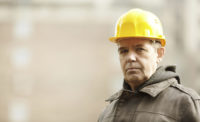By Secretary Tom Perez, Joseph Main and Dr. David Michaels
The fatal explosion at the Upper Big Branch mine in 2010 shocked the nation. It was the worst mine disaster in the United States in decades, with 29 coal miners losing their lives. Earlier this month, jurors in West Virginia sent a clear message that no mine operator is above the law when they found former Massey Energy CEO Don Blankenship guilty of conspiracy to willfully violate mine health and safety standards.
Workers in every industry – from miners who travel deep beneath the earth’s surface, to construction workers who climb great heights to build our skyscrapers – have the right to return home safe and healthy at the end of every shift. While we have made great progress in our commitment to ensuring that employers provide safe workplaces, thousands of workers are still killed on the job every year, and some three million are seriously injured. In addition to the human cost, workplace injuries and illnesses undermine the economic security of working families, leaving workers less able to provide for their families, access higher education and save for the future.
At the Department of Labor, safety and health is a core part of our mission. From nail salon workers to the men and women who process our food to those who handle our waste and recycling, every worker adds value to our communities and our economy, and every worker deserves a safe and healthy workplace.
That includes, of course, the more than 365,000 miners who leave their homes each day and head to the nation’s mines, extracting dozens of different kinds of minerals from the earth. Many of us at the Mine Safety and Health Administration have worked as miners ourselves, and we strive to ensure that basic workplace protections give our miners the chance to enjoy continued employment, decent health and quality of life. Extraordinary progress has been made in mine safety, but we must never lose sight of our goal of zero mining deaths.
Miners produce the gravel, crushed stone, tar, asphalt, road salt and cement that are used to build and maintain the nation’s infrastructure. The men and women who transform these materials into roads, bridges and tall buildings often work from significant heights – on ladders, scaffolds and roofs – and they deserve access to equipment, training and resources to perform their job safely. Working from heights is inherently dangerous, but protecting workers from falls is feasible and...Click here to read the rest of the blog post.


